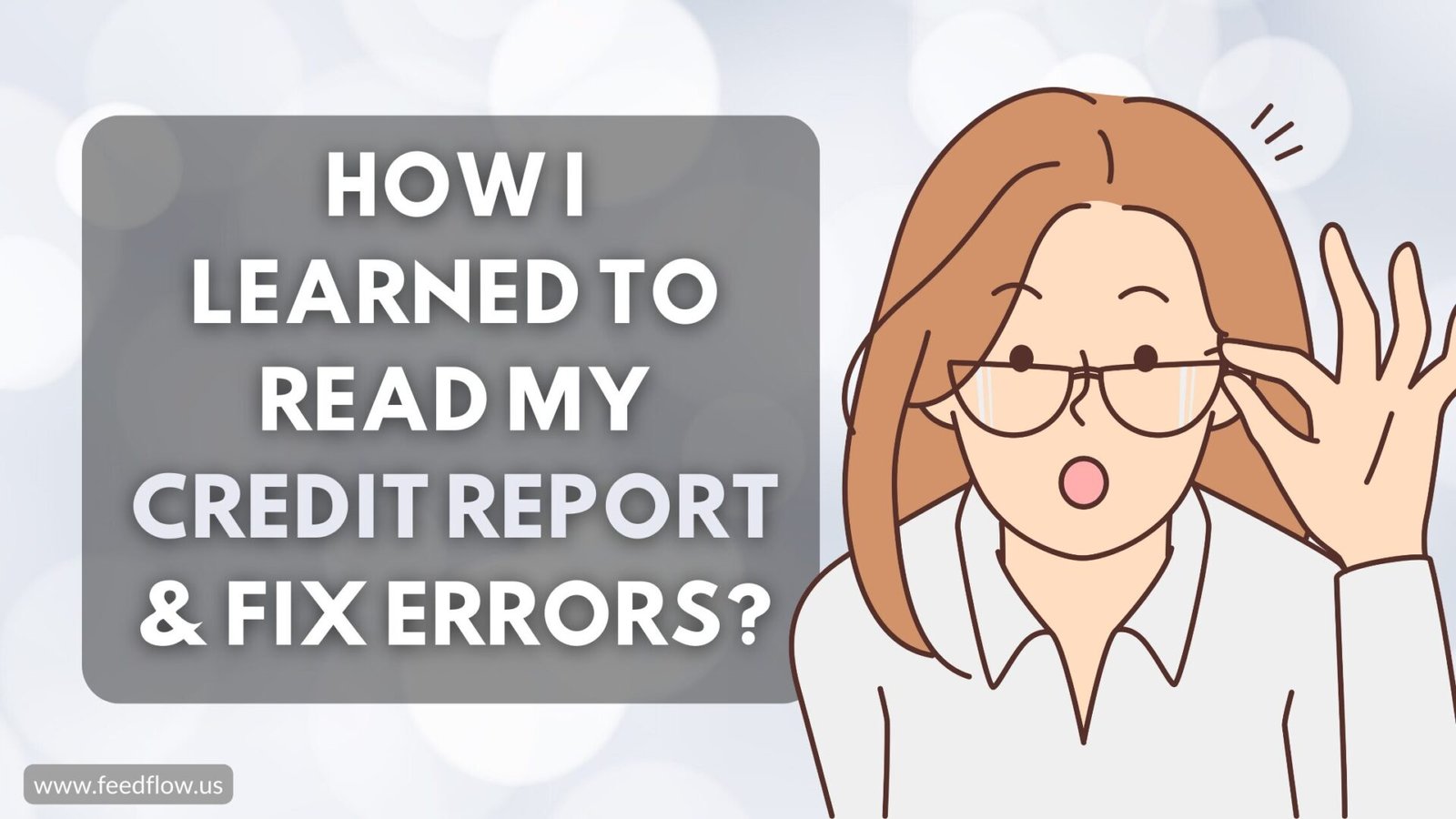
How I Learned to Read My Credit Report And Fix Errors?
Table of Contents
How I Learned to Read My Credit Report And Fix Errors?
When I first received my credit report, I felt lost. The pages were filled with unfamiliar numbers, terms, and entries that seemed like a foreign language. Like many, I underestimated how crucial this document is—and how much damage errors on it could cause. My journey to understanding my credit report, identifying mistakes, and fixing them transformed not just my credit score, but my entire approach to personal finance. Here’s the story of that transformation, and what I learned along the way about balancing analytical insight with passion for financial health.
What Is a Credit Report?
At its core, a credit report is a detailed record of your borrowing and repayment history. It collates data from banks, credit card companies, and other financial institutions to present a snapshot of your creditworthiness. This report plays a critical role whenever you apply for a loan, mortgage, or even some jobs. It informs decisions about the interest rates you’ll pay and, in some cases, whether you get approved at all.
Realizing the magnitude of what was resting quietly in these pages made me understand why it’s essential to know exactly what’s on your credit report—and to ensure its accuracy.
Step One: Obtaining the Report
I discovered that under federal law, I could request a free copy of my credit report once every 12 months from each of the three major credit bureaus (Equifax, Experian, and TransUnion). I chose to get my reports from all three, recognizing that each might have slightly different information or errors.
Accessing my report through the official channel (AnnualCreditReport.com in the U.S.) is the safest and most reliable method, and it’s a right everyone should exercise regularly.
Step Two: Reading the Report — Breaking Down the Complexity
Reading a credit report felt daunting at first, but I divided it into sections to make the process manageable:
- Personal Details: Checking my name, address, and Social Security number for accuracy.
- Credit Accounts: Scrutinizing each loan or credit card account listed — their status, payment history, and balances.
- Credit Inquiries: Seeing who has requested my credit information in recent months.
- Negative Items: Watching carefully for missed payments, collections, or bankruptcies.
By approaching each section methodically, I could absorb the information without feeling overwhelmed. I learned to note inconsistencies such as accounts I never opened or payment statuses that didn’t reflect what I knew to be true.
Step Three: Identifying and Fixing Errors
Studies suggest that about 1 in 5 credit reports contain errors, and many of these errors can hurt your credit score substantially. My report was no exception. I found:
- Accounts that had been closed but were listed as open.
- Payments reported late that I knew were paid on time.
- Duplicate listings of the same debt, inflating my liabilities.
Fixing these errors required deliberate action:
- Documenting the Error: I printed the report sections showing mistakes and gathered any proof I had (statements, payment confirmations).
- Submitting a Dispute: Through the credit bureau’s online portal, I filed formal disputes outlining the inaccuracies with supporting documentation.
- Following Up: The bureau took about 30 days to investigate, after which they updated my report where appropriate.
- Confirming Corrections: I reviewed the new version of my report to ensure all changes were properly made.
The experience underscored something powerful: these reports are not infallible, and neither are the systems that build them. It’s crucial not to accept your credit report as gospel.
Why This Matters
Understanding how to read and correct your credit report isn’t just about financial technicalities—it’s about reclaiming control over your financial identity. Errors in these reports can sabotage loan approvals, inflate interest rates, and even affect employment opportunities.
Taking the time to thoroughly review your credit report and fix errors saves money, reduces stress, and improves your overall financial well-being. More importantly, it teaches a vital lesson: that knowledge combined with action creates empowerment.
If I can share one piece of advice, it’s this: don’t shy away from your credit report. Approach it with curiosity and determination. The clarity and confidence that come from mastering this financial document will serve you for a lifetime.








